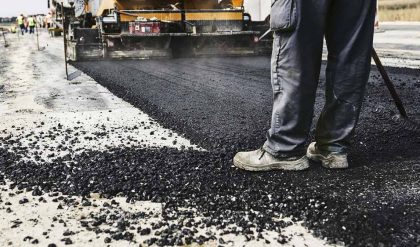The desalted crude feedstock is preheated using recovered process heat. The feedstock then flows to a direct-fired crude charge heater where it is fed into the vertical distillation column just above the bottom, at pressures slightly above atmospheric and at temperatures ranging from 650° to 700° F (above these temperatures undesirable thermal cracking may occur). All but the heaviest fractions flash into vapor. As the hot vapor rises in the tower, its temperature is reduced. Heavy fuel oil or asphalt residue is taken from the bottom. At successively higher points on the tower, the various major products including lubricating oil, heating oil, kerosene, gasoline, and uncondensed gases (which condense at lower temperatures) are drawn off.

The fractionating tower, a steel cylinder about 120 feet high, contains horizontal steel trays for separating and collecting the liquids. At each tray, vapors from below enter perforations under the bubble caps. The latter permit the vapors to bubble through the liquid on the tray, causing some condensation at the temperature of that tray. An overflow pipe drains the condensed liquids from each tray back to the tray below, where the higher temperature causes re-evaporation. The evaporation, condensing, and scrubbing operation is repeated many times until the desired degree of product purity is reached. Then, side streams from certain trays are taken off to obtain the desired fractions. Products ranging from uncondensed fixed gases at the top to heavy fuel oils at the bottom can be taken continuously from a fractionating tower. Steam is often used in towers to lower the vapor pressure and create a partial vacuum. The distillation process separates the major constituents of crude oil into so-called straight-run products. Sometimes crude oil is “topped” by distilling off only the lighter fractions, leaving a heavy residue that is often distilled further under high vacuum.
Atmospheric Distillation Process
| Feedstock | From | Process | Typical products – to – unit |
| Crude | Desalting | Separation | Gases To Atmospheric distillation towerNaphtas. To Reforming or treatingKerosene or distillates To TreatingGas oil To Catalytic crackingResidual To Vacuum tower or visbreaker |

